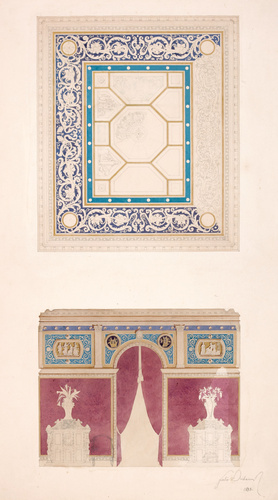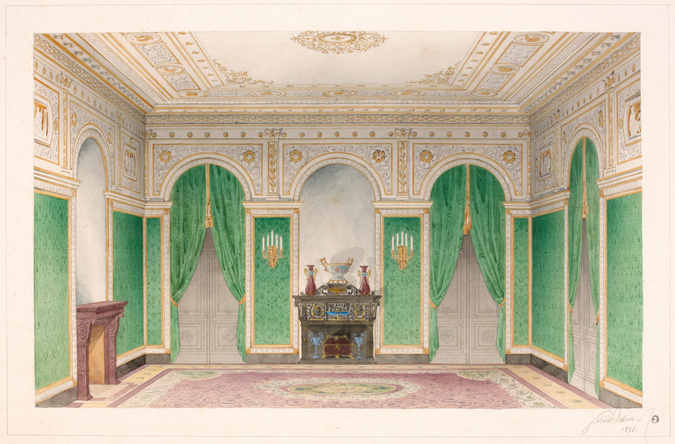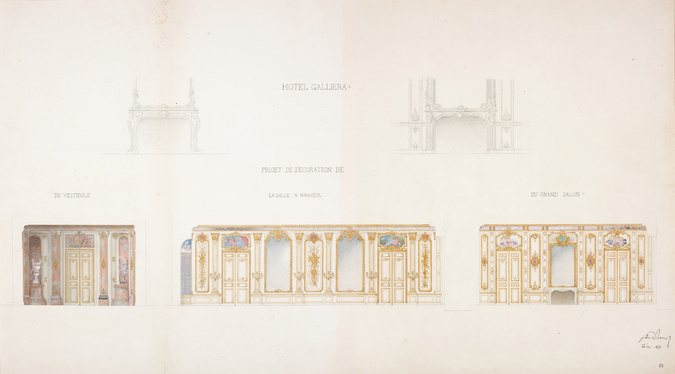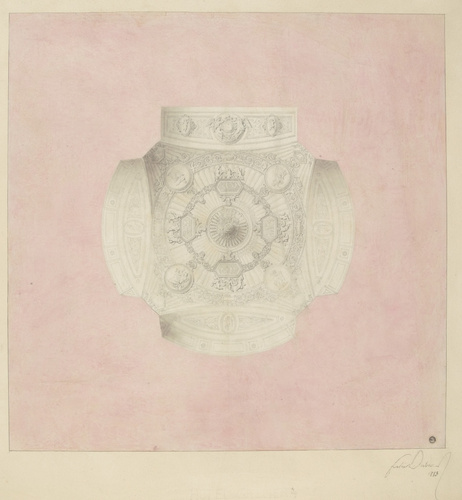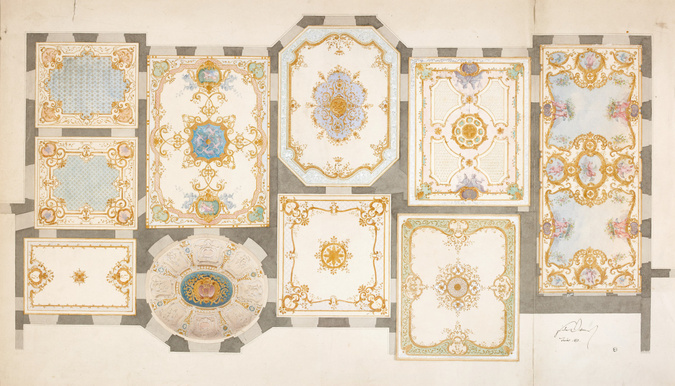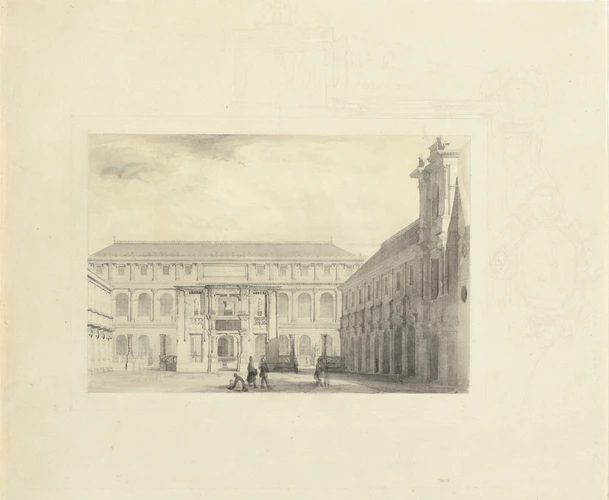La Moisson
This scene of village life in a reinvented antiquity is one of those Compositions that reveal the fantasist and imaginative nature of Félix Duban. Here, the architect demonstrates his qualities as an illustrator as well as his sense of colour. Having studied at the Villa Medici in the early 1820s, he was one of the first to bring back the polychromy of classical architecture in his layouts and reconstructions.
Duban depicts peasant activities in Roman times with a light touch, combining sacred rites and agricultural work. The small, elevated temple, with an interior decoration of a peasant holding the handles of a plough, is dedicated to Ceres, the Roman goddess of fertility, agriculture and harvests. In front of the entrance there is an offering of corn sheaves on a pedestal.
Each element in the drawing celebrates the gifts of nature: against a background of an aqueduct and mountains, clear water flows abundantly out of the mouth of a lion that decorates a fountain; on the right, a statue with a smiling face and crowned with laurel collects fruit and vegetables generously provided by the land; in the middle ground, numerous haystacks evoke abundance.
Duban included considerable detail: a small cart decorated with garlands and ribbons, oxen with foliage adorning their heads, a yoke shaft with a small rudimentary sculpture, probably of Ceres, with her sickle, and a stylised ram's head on the back of the cart. All these elements give the impression of a scene drawn from nature, a genuine illustration from Hesiod's poem, Works and Days.


